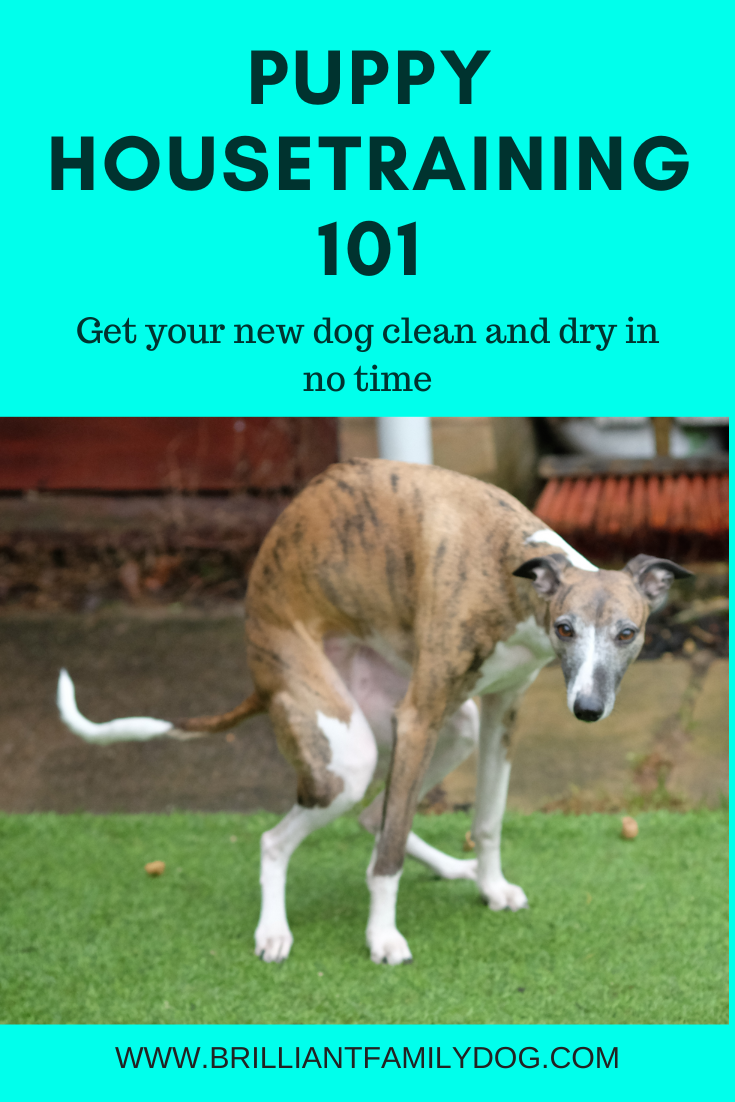“My puppy’s peeing all over the place!”
This is a sure sign of a confused puppy. He’s going to pee, and it’s for you to ensure that it all goes where you want it to go.
Housetraining is a management issue - that means that it’s entirely up to you!
And honestly, it’s not hard! You just have to have certain rules in place - mostly rules for yourself! - and the puppy will be happy to fit in with this. They really are willing little souls.
Here’s my Errorless Housetraining Cheatsheet which shows you EXACTLY how to achieve a clean, dry, puppy in the shortest time possible.
I aim to have puppies clean and dry by night as soon as they arrive, at 8 weeks. By day, by 14 weeks latest. This works!
What about the older dog I’ve just rescued?
Good for you! Giving a forever home to a dog who never even lived in a house. But no need to worry. She wants to be clean and dry, just as much as you want her to be. So follow the Cheatsheet and just allow her a little more time between visits outside, cos she can hold it longer.
Otherwise, follow the exact same timetable, the exact same system.
You probably don’t know her history - she may have been punished for eliminating “in the wrong place” in the past. So be fulsome in your excitement and praise when she gets it right - plenty of treats and a game!
Give her time to sniff - it’s often a precursor to a wee or a poo.
But I live in an apartment!
This is where you have to become creative! You can’t be racing down 99 flights of stairs every half hour with your puppy. But that doesn’t mean he can’t become housetrained.
I don’t recommend using paper pads in the house at all. But obviously this would be an exception.
But the key to success is in having a special place for the puppy to go. This needs to be very clearly a special toileting place, with clear boundaries. Pee pads scattered over the floor won’t work. It will also encourage the confused puppy to eliminate on anything he finds on the floor … 😱 😳
I suggest you put the paper pads in some sort of container, like a very large tea tray, something with clearly-defined sides he can hop over to get in. If you’re handy, you can construct a frame from wood or pvc (pipes with elbows perhaps?) which would act as a boundary. Then you can keep it in the bathroom (don’t forget to keep the door propped open!) for ease of access and disposal. Many dogs like to be private, and this would work well for them.
You’ll need to keep the area spotlessly clean, replacing soiled paper with fresh immediately.
Now follow the Cheatsheet, using a lead, and simply take the puppy to your pee place on the suggested schedule.
To teach the pup that outside is the ideal place, you can make excursions downstairs when there’s a bit of time (I.e. not when he’s just woken from a sleep), perhaps after a meal. You may find that placing a bit of used pee pad on the ground will encourage him to know this is an ok place.
As I say, they really do want to do the right thing!
What else do you need to know to make this quick and successful?
If it’s very cold out, be sure to wrap your young puppy up warm, and yourself too! You could be standing about for a good few minutes waiting for the right moment. This is a time investment that will pay off really quickly.
So leave an umbrella and jacket for you and a jumper for him near the back door, so you can get out fast.
You may like to always take the puppy to a particular area of your garden and see if he gets the message that this is The Place!
All in all, remember that this too shall pass. Your puppy will be reliably clean and dry very quickly. Standing out in all weathers to teach her will all pay off!
Have patience, and always include a game with your little pup when she’s done her stuff.
Then it’s fun for you too.
Got a new puppy? Check out
New Puppy!
From new puppy to Brilliant Family Dog
here!
Prefer to listen?
The audiobook is here


